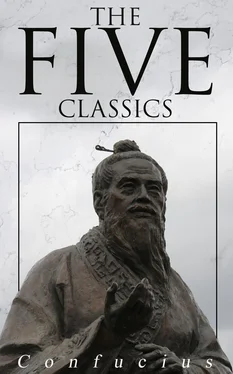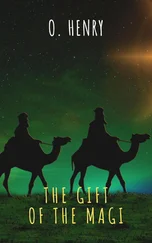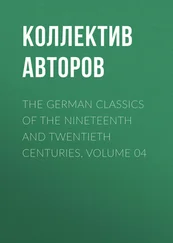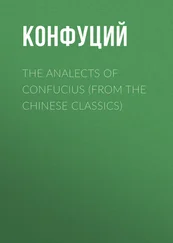At the same time it is an unfair description of what they have accomplished to say, as has been done lately, that since the fires of Ȝhin, 'the foremost scholars of each generation have edited the Text (meaning both the Text and the Appendixes), and heaped commentary after commentary upon it; and one and all have arrived at the somewhat lame conclusion that its full significance is past finding out 13.' A multitude of the native commentaries are of the highest value, and have left little to be done for the elucidation of the Text; and if they say that a passage in an Appendix is 'unfathomable' or 'incalculable,' it is because their authors shrink from allowing, even to themselves, that the ancient sages intermeddled, and intermeddled unwisely, with things too high for them.
When the same writer who thus speaks of native scholars goes on to say that 'in the same way a host of European Chinese scholars have made translations of the Yî, and have, if possible, made confusion worse confounded,' he only shows how imperfectly he had made himself acquainted with the subject. 'The host of European Chinese scholars who have made translations of the Yî' amount to two,--the same two mentioned by me above on pp. 6, 7. The translation of Regis and his coadjutors 14is indeed capable of improvement; but their work as a whole, and especially the prolegomena, dissertations, and notes, supply a mass of correct and valuable information. They had nearly succeeded in unravelling the confusion, and solving the enigma of the Yî.
1.Confucian Analects, VII, xvi.
2.The Historical Records; Life of Confucius, p. 12.
3.Analects, VII, xvii.
4.Legge's Chinese Classics, I, prolegomena, pp. 6-9.
5.Books of the Earlier Han; History of Literature, pp. 1, 2.
6.See the K âu Kwan (or Lî), Book XXIV, parr. 3, 4, and 27. Biot (Le Tcheou Lî, vol. ii, pp. 70, 71) translates the former two paragraphs thus: 'Il (Le Grand Augure) est préposé aux trois methodes pour les changements (des lignes divinatoires). La première est appelée Liaison des montagnes (Lien-shan); la seconde, Retour et Conservation (Kwei-ȝhang); la troisième, Changements des K âu. Pour toutes il y a huit lignes symboliques sacrées, et soixante-quatre combinaisons de ces lignes.'
Some tell us that by Lien-shan was intended Fû-hsî, and by Kwei-ȝhang Hwang Tî; others, that the former was the Yî of the Hsiâ dynasty, and the latter that of Shang or Yin. A third set will have it that Lien-shan was a designation of Shăn Năng, between Fû-hsî and Hwang Tî. I should say myself, as many Chinese critics do say, that Lien-shan was an arrangement of the lineal symbols in which the first figure was the present 52nd hexagram, Kăn  consisting of the trigram representing mountains doubled; and that Kwei-ȝhang was an arrangement where the first figure was the present 2nd hexagram, Khwăn
consisting of the trigram representing mountains doubled; and that Kwei-ȝhang was an arrangement where the first figure was the present 2nd hexagram, Khwăn  consisting of the trigram representing the earth doubled,--with reference to the disappearance and safe keeping of plants in the bosom of the earth in winter. All this, however, is only conjecture.
consisting of the trigram representing the earth doubled,--with reference to the disappearance and safe keeping of plants in the bosom of the earth in winter. All this, however, is only conjecture.
7.See in the Ȝo Khwan, under the 22nd year of duke K wang (B.C. 672); the 1st year of Min (1661); and in his 2nd year (660); twice in the 15th year of Hsî (645); his 25th year (635); the 12th year of Hsüan, (597); the 16th year of Kh ăng (575); the 9th year of Hsiang (564); his 25th year (548); the 5th year of Kh âo (537); his 7th year (535); his 12th year (530); and the 9th year of Âi (486).
8.That is, the third as it appears farther on in this volume in two Sections. With the Chinese critics it forms the fifth and sixth Appendixes, or, 'Wings,' as they are termed.
9.Sze-mâ Kh ien (History of the K âu Dynasty, p. 3) relates that, 'when he was confined in Yû-lî, Wăn increased the 8 trigrams to 64 hexagrams.'
10.E.g., hexagrams XVII, 1. 6; XLVI, 1. 4. Tan's authorship of the symbolism is recognised in the Ȝo Kh wan, B. C. 540.
11.P. Regis (vol. ii, P. 379) says: 'Vel nihil vel parum errabit qui dicet opus Yî King fuisse perfectum anno quinto Kh ăng Wang, seu anno 1109 aut non ultra annum 1108, ante aerae Christianae initium; quod satis in rebus non omnino certis.' But the fifth year of king Kh ăng was B. C. 1111.
12.It has been suggested that 'Antiquissimus Sinarum liber' may mean only 'A very ancient book of the Chinese,' but the first sentence of the Preface to the work commences:--'Inter onmes constat librorum Sinicorum, quos classicos vocant, primum et antiquissimum esse Y-King.'
At the end of M. De Guignes' edition of P. Gaubil's translation of the Shû, there is a notice of the Yî King sent in 1738 to the Cardinals of the Congregation de Propaganda Fide by M. Claude Visdelou, Bishop of Claudiopolis. M. De Guignes says himself, 'L' Y-King est le premier des Livres Canoniques des Chinois.' But P. Visdelou writes more guardedly and correctly:--'Pour son ancienneté, s'il en faut croire les Annales des Chinois, il a été commencé quarante-six siècles avant celui-ci. Si cela est vrai, comme toute la nation l'avoue unanimement, ou peut à juste titre l'appeler le plus ancien des livres.' But he adds, 'Ce n'étoit pas proprement un livre, ni quelque chose d'approchant; c'étoit une énigme très obscure, et plus difficile cent fois à expliquer que celle du sphinx.'
P. Couplet expresses himself much to the same effect in the prolegomena (p. xviii) to the work called 'Confucius Sinarum Philosophus,' published at Paris in 1687 by himself and three other fathers of the Society of Jesus (Intorcetta, Herdritch, and Rougemont). Both they and P. Visdelou give an example of a portion of the text and its interpretation, having singularly selected the same hexagram,--the 15th, on Humility.
13.See a communication on certain new views about the Yî in the 'Times' of April 20, 1880; reprinted in Trübner's American, European, and Oriental Literary Record, New Series, vol. i, pp. 125-127.
14.Regis' coadjutors in the work were the Fathers Joseph de Mailla, who turned the Chinese into Latin word for word, and compared the result with the Man k âu version of the Yî; and Peter du Tartre, whose principal business was to supply the historical illustrations. Regis himself revised all their work and enlarged it, adding his own dissertations and notes. See Prospectus Operis, immediately after M. Mohl's Preface.
CHAPTER II
THE SUBJECT-MATTER OF THE TEXT. THE LINEAL FIGURES AND THE EXPLANATION OF THEM
Table of Contents
1. Having described the Yî King as consisting of a text in explanation of certain lineal figures, and of appendixes to it, and having traced the composition of the former to its authors in the twelfth century B. C., and that of the latter to between six and seven centuries later at least, I proceed to give an account of what we find in the Text, and how it is deduced from the figures.
The subject-matter of the Text may be briefly represented as consisting of sixty-four short essays, enigmatically and symbolically expressed, on important themes, mostly of a moral, social, and political character, and based on the same number of lineal figures, each made up of six lines, some of which are whole and the others divided.
The first two and the last two may serve for the present as a specimen of those figures:  ,
,  , and
, and  1. The Text says nothing about their origin and formation. There they are. King Wăn takes them up, one after another, in the order that suits himself, determined, evidently, by the contrast in the lines of each successive pair of hexagrams, and gives their significance, as a whole, with some indication, perhaps, of the action to be taken in the circumstances which he supposes them to symbolise, and whether that action will be lucky or unlucky. Then the duke of K âu, beginning with the first or bottom line, expresses, by means of a symbolical or emblematical illustration, the significance of each line, with a similar indication of the good or bad fortune of action taken in connexion with it. The king's interpretation of the whole hexagram will be found to be in harmony with the combined significance of the six lines as interpreted by his son.
1. The Text says nothing about their origin and formation. There they are. King Wăn takes them up, one after another, in the order that suits himself, determined, evidently, by the contrast in the lines of each successive pair of hexagrams, and gives their significance, as a whole, with some indication, perhaps, of the action to be taken in the circumstances which he supposes them to symbolise, and whether that action will be lucky or unlucky. Then the duke of K âu, beginning with the first or bottom line, expresses, by means of a symbolical or emblematical illustration, the significance of each line, with a similar indication of the good or bad fortune of action taken in connexion with it. The king's interpretation of the whole hexagram will be found to be in harmony with the combined significance of the six lines as interpreted by his son.
Читать дальше

 consisting of the trigram representing mountains doubled; and that Kwei-ȝhang was an arrangement where the first figure was the present 2nd hexagram, Khwăn
consisting of the trigram representing mountains doubled; and that Kwei-ȝhang was an arrangement where the first figure was the present 2nd hexagram, Khwăn  consisting of the trigram representing the earth doubled,--with reference to the disappearance and safe keeping of plants in the bosom of the earth in winter. All this, however, is only conjecture.
consisting of the trigram representing the earth doubled,--with reference to the disappearance and safe keeping of plants in the bosom of the earth in winter. All this, however, is only conjecture. ,
,  1. The Text says nothing about their origin and formation. There they are. King Wăn takes them up, one after another, in the order that suits himself, determined, evidently, by the contrast in the lines of each successive pair of hexagrams, and gives their significance, as a whole, with some indication, perhaps, of the action to be taken in the circumstances which he supposes them to symbolise, and whether that action will be lucky or unlucky. Then the duke of K âu, beginning with the first or bottom line, expresses, by means of a symbolical or emblematical illustration, the significance of each line, with a similar indication of the good or bad fortune of action taken in connexion with it. The king's interpretation of the whole hexagram will be found to be in harmony with the combined significance of the six lines as interpreted by his son.
1. The Text says nothing about their origin and formation. There they are. King Wăn takes them up, one after another, in the order that suits himself, determined, evidently, by the contrast in the lines of each successive pair of hexagrams, and gives their significance, as a whole, with some indication, perhaps, of the action to be taken in the circumstances which he supposes them to symbolise, and whether that action will be lucky or unlucky. Then the duke of K âu, beginning with the first or bottom line, expresses, by means of a symbolical or emblematical illustration, the significance of each line, with a similar indication of the good or bad fortune of action taken in connexion with it. The king's interpretation of the whole hexagram will be found to be in harmony with the combined significance of the six lines as interpreted by his son.










